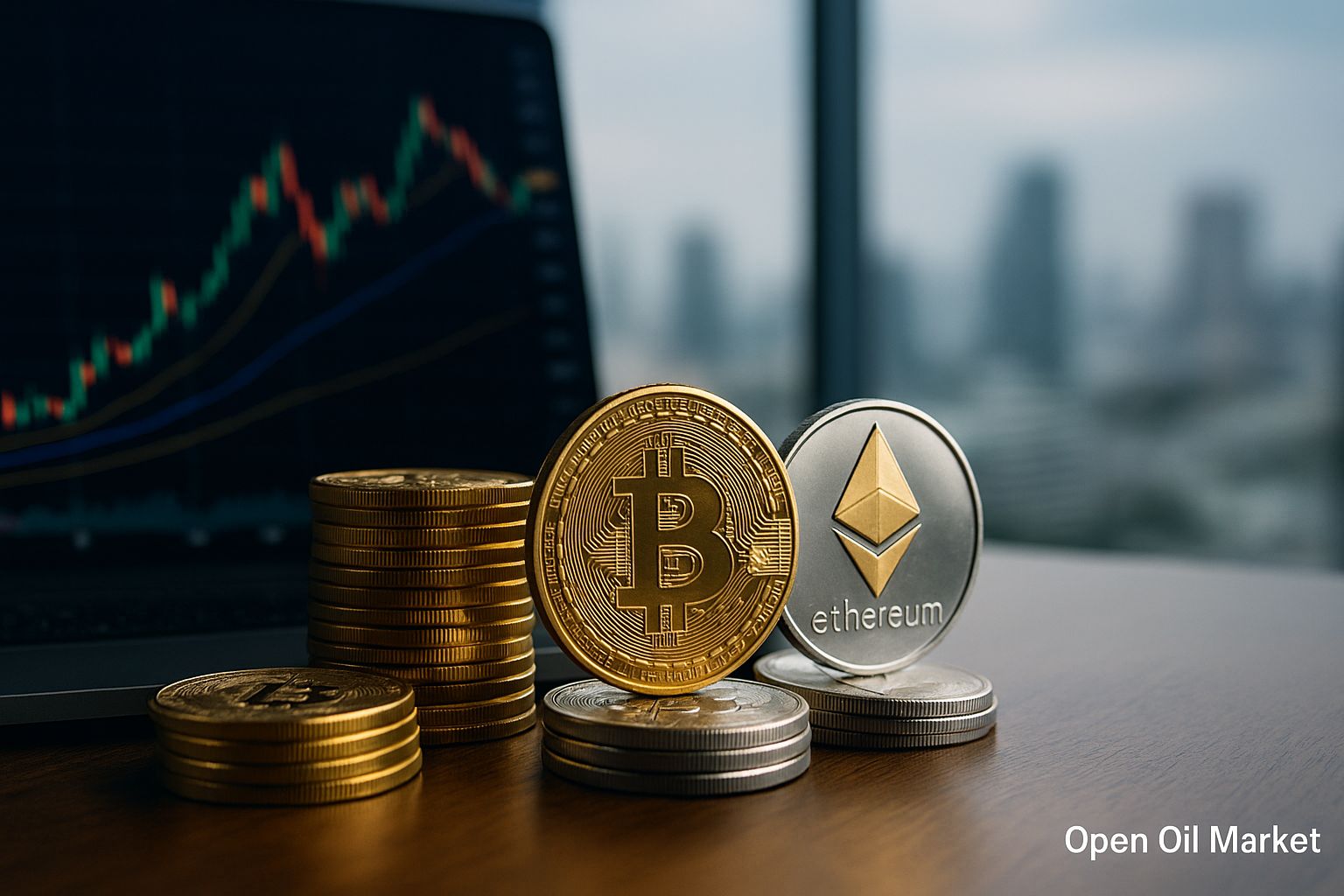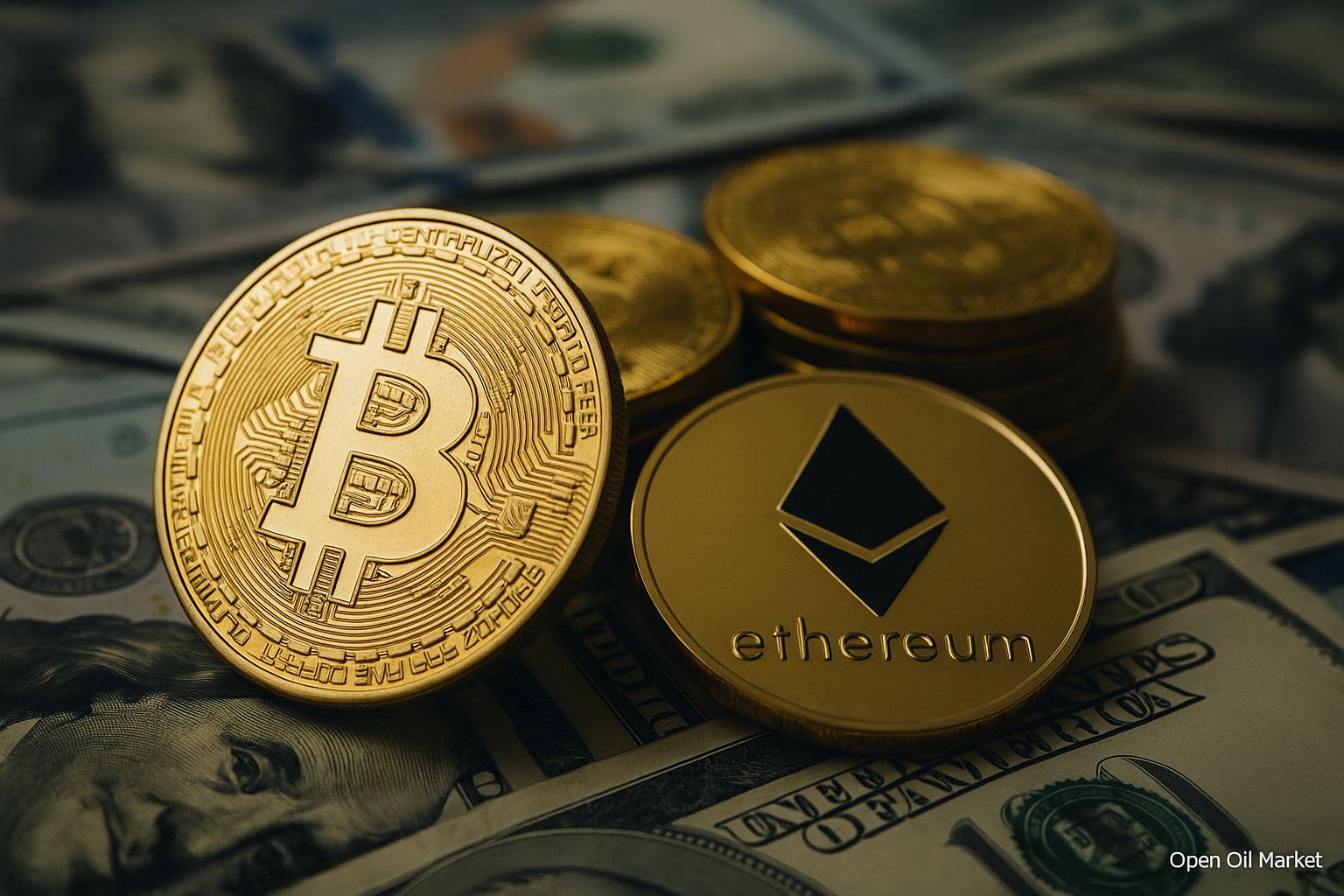
Current Cryptocurrency News for Friday, November 14, 2025. Bitcoin Holds Above $100,000, Ethereum Stabilizes, Altcoins Consolidate, and Institutional Investors Return to the Market. Full Review and Analysis.
The global cryptocurrency market is showing signs of consolidation following the rapid rally in October. The total market capitalization of cryptocurrencies hovers around $3.5 trillion, down approximately 1% over the past 24 hours. Investors are exercising caution: the Fear and Greed Index has fallen into the extreme fear zone, reflecting increased uncertainty. Nevertheless, the resolution of the prolonged U.S. government shutdown alleviates some macroeconomic risks, possibly providing the market with short-term relief. In this context, market participants are focused on whether Bitcoin can hold above the psychologically important level and if a new phase of altcoin growth will commence.
Bitcoin: Consolidation After a Record Rally
Bitcoin (BTC) remains the barometer of the entire cryptocurrency market. At the beginning of October, the flagship cryptocurrency reached a new all-time high around $125,000, driven by a surge of institutional investments and enthusiasm surrounding Bitcoin exchange-traded funds (ETFs). However, this was followed by the anticipated profit-taking: prices retreated and this week briefly dropped below $100,000 for the first time since summer. Currently, Bitcoin is consolidating around $102,000–$105,000, staying above the critical mark of $100,000. Market analysts note that despite the current pause in growth, Bitcoin retains about 58% of the total market capitalization, underscoring its dominance. Institutional interest remains robust – trading volumes in futures and options contracts remain high, although volatility has increased to levels not seen since the FTX collapse in 2022. Investors will be monitoring whether Bitcoin can sustain six-figure prices and resume growth by year-end, or if corrections will deepen.
Ethereum Amid Market Trends
Ethereum (ETH), the second-largest cryptocurrency by market capitalization, is moving in line with the overall market. In recent weeks, Ethereum has maintained a range of around $3,400–$3,600, gaining approximately 1% in the last 24 hours. While current prices remain below Ethereum's all-time high (approximately $4,800, reached in 2021), the Ethereum platform continues to play a key role in the ecosystem. The increase in funds locked in smart contracts and sustained interest in decentralized finance (DeFi) and NFTs demonstrate Ethereum's fundamental value. Investors are also looking forward to further network developments: after the transition to Proof of Stake (PoS) and scalability upgrades, Ethereum has solidified its status as "digital infrastructure" for numerous projects. While Bitcoin serves as "digital gold," Ethereum remains "digital oil," providing fuel for decentralized applications. With favorable market conditions, ETH has the potential to catch up to new heights, especially if additional institutional products for Ethereum (such as anticipated spot ETFs) emerge.
Altcoins and Investor Sentiment
The altcoin market is displaying mixed dynamics. Some large alternative coins show relative resilience, whereas more speculative tokens are subject to sharp fluctuations. For instance, Ripple (XRP) has stood out with a confident increase: over the past week, XRP has appreciated approximately 4%, reaching $2.40 – a multi-year high. XRP's support stems from improved legal clarity (following positive outcomes in court disputes in the U.S.) and a surge in activity in the derivatives market. Meanwhile, some previously rapidly growing sectors are cooling off: meme tokens and niche projects (including those related to AI) have significantly declined as some retail speculators exited. The Bitcoin dominance index has slightly retreated from peak values, indicating potential capital rotation into altcoins. Analysts note the first signs of a potential "altcoin season" – if this trend continues, smaller cryptocurrencies could accelerate growth. However, the overall sentiment remains cautious: investor sentiment indicators are in the "fear" phase, and many prefer to invest in established assets. Volatility in the altcoin segment is heightened – certain lesser-known tokens can lose double-digit percentages in a single day, highlighting the market’s selectiveness. Thus, altcoins are generally consolidating in anticipation of new momentum, with capital being distributed in favor of the most promising and liquid projects.
Top 10 Most Popular Cryptocurrencies
Despite local fluctuations, the following assets are included in the ranking of the largest and most popular cryptocurrencies by market capitalization:
- Bitcoin (BTC) – The first and largest cryptocurrency, "digital gold" of the market. Price around $102,000–$105,000, capitalization over $2 trillion. It dictates the movements of the entire crypto market.
- Ethereum (ETH) – The largest smart contract platform. Price ~ $3,500, capitalization around $400 billion. The backbone for DeFi, NFTs, and many blockchain applications.
- Tether (USDT) – The largest stablecoin pegged to the U.S. dollar. Capitalization around $90 billion. Widely used for liquidity provision and hedging in the crypto market.
- Ripple (XRP) – Token of Ripple's payment network for cross-border transfers. Trading around $2.40, capitalization exceeds $120 billion. Regained positions due to legal clarity and interest from financial companies.
- Binance Coin (BNB) – The internal coin of the Binance ecosystem. Price close to all-time high (~$950), capitalization over $150 billion. Reflects the success of the world’s largest cryptocurrency exchange and is used for paying fees and services.
- Solana (SOL) – High-speed blockchain for decentralized applications. Price ~$153, capitalization around $60 billion. After past challenges (including outages and turbulence in 2022), Solana has significantly recovered its losses and established itself in the top 10.
- USD Coin (USDC) – The second-largest stablecoin, backed by dollar reserves. Capitalization around $50 billion. Trusted by institutional investors, it serves as a bridge between traditional finance and crypto trading.
- Tron (TRX) – A blockchain platform known for its focus on digital entertainment and fast transactions. Price ~$0.30, capitalization around $25–30 billion. TRX consistently remains among the leaders due to active utilization in stablecoins and DeFi applications.
- Dogecoin (DOGE) – The most well-known "meme coin," originally created as a joke. Price around $0.17 (below 2021 peaks), capitalization ~$25 billion. Supported by an active community and episodic mentions by famous entrepreneurs, which periodically ignites speculative interest.
- Cardano (ADA) – A blockchain platform focusing on a scientific approach and scalability. Price ~$0.55, capitalization around $20 billion. Despite relatively slow ecosystem development, ADA maintains its spot among the top ten crypto assets due to a dedicated investor base and ongoing technology advancements (e.g., recent network updates to support smart contracts).
Regulation and Institutional Participation
The regulatory environment surrounding cryptocurrencies is significantly clarifying, which boosts investor confidence. In the United States, there has been advancement in the legalization of crypto instruments: in 2024, the first spot Bitcoin ETFs launched, opening access to Bitcoin for a broad range of investors via traditional exchanges. In 2025, this trend expanded – this week, Swiss provider 21Shares launched the first crypto index ETFs in the U.S., including a basket of several coins (Ethereum, Solana, Dogecoin, etc.). These funds, registered under stringent requirements of the Investment Company Act of 1940, are another step towards integrating crypto assets into the traditional financial sector. Simultaneously, U.S. legislators provided regulatory clarity for stablecoins: in summer, Congress passed the GENIUS Act, establishing rules for stablecoin issuers, similar to the European MiCA regulation. In Europe, by early 2025, key provisions of the MiCA package came into force, creating uniform rules for the crypto business across EU countries. This includes reserve requirements for stablecoins, licensing of service providers, and investor protections. Amid tightening controls, the industry is also seeing positive signals: large traditional financial companies continue to enter the cryptocurrency market. Institutional investors—from hedge funds to pension funds—are gradually increasing exposure to digital assets, viewing them as a new asset class. In Asia, financial hubs such as Hong Kong and Singapore are adopting progressive regulations and attracting crypto companies, aiming to become global crypto hubs. Collectively, these trends indicate a global shift: cryptocurrencies are transitioning from "wild" assets to a regulated legal framework, which in the long term can significantly enhance capital flow into the market.
Macroeconomic Factors
The overall macroeconomic landscape remains a significant driver for the cryptocurrency market. In recent months, high interest rates and the fight against inflation have compelled investors to reduce risk, partially suppressing price growth for digital assets. The prolonged 43-day shutdown of the U.S. government (ending November 12) led to a pause in the release of key economic statistics and delays in making important budget decisions. This increased uncertainty and temporarily reduced liquidity in financial markets: during the budget crisis, Bitcoin's volatility surged, and the correlation between cryptocurrencies and stock indices (e.g., Nasdaq) reached 0.88, signaling a close relationship with the equity market. Now that the government has resumed operations, investors are gaining a clearer view of economic conditions—such as inflation and employment data that influence the Federal Reserve's policy. The U.S. dollar remains relatively strong (DXY index around 100 points); traditionally, a strengthening dollar exerts downward pressure on cryptocurrency prices, as it lowers appetite for riskier investments. On the other hand, the end of the rate hike cycle, expected by the end of 2025, could relieve some of this pressure. For now, the market is in a "wait-and-see mode": investors are closely watching for signals from the Fed and other central banks. Signs of monetary policy easing or slowing inflation could provide the positive impetus the crypto market needs for new growth. Conversely, worsening macro statistics or unexpected financial shocks could intensify capital outflows from risk assets, including cryptocurrencies. Thus, macro factors play a dual role, simultaneously limiting the current rally and creating the conditions for the next stage of market movement.
Outlook and Predictions
As we approach the end of 2025, the cryptocurrency market finds itself at a crossroads. On one hand, the impressive growth of Bitcoin and several leading altcoins this year has confirmed a long-term upward trend: even after the pullback, many assets trade significantly above the levels at the beginning of the year, attracting new investors. Increased institutional presence and regulatory progress are forming a more mature and stable ecosystem, laying the groundwork for further market expansion. Some optimistic analysts believe that after the consolidation phase, a new surge is possible—predictions are surfacing regarding Bitcoin's potential to surpass the $150,000 mark or even reach $200,000 within the next year if economic conditions improve. On the other hand, risks remain: in the short term, the market may continue to be volatile and sensitive to news flow. Delayed launches of large projects, cybersecurity incidents (such as the recent hack of a DeFi platform causing ~$5 million in damage), or tightening of regulatory policies could dampen participants' enthusiasm. Most experts agree that a key factor for new growth will be the emergence of clear drivers—whether in the form of mass adoption of cryptocurrencies by large businesses, technological breakthroughs (like launching effective scalability solutions), or a macroeconomic pivot toward stimulative measures. Overall, sentiment is gradually shifting from a "wait-and-see strategy" to moderate optimism: the cryptocurrency market has structurally strengthened and is ready to embrace new heights, although the path to them may be uneven. Investors are advised to maintain a balance between opportunities and risks, diligently monitor news developments, and continue diversifying their portfolios, as the cryptocurrency landscape heads into an eventful 2026.




